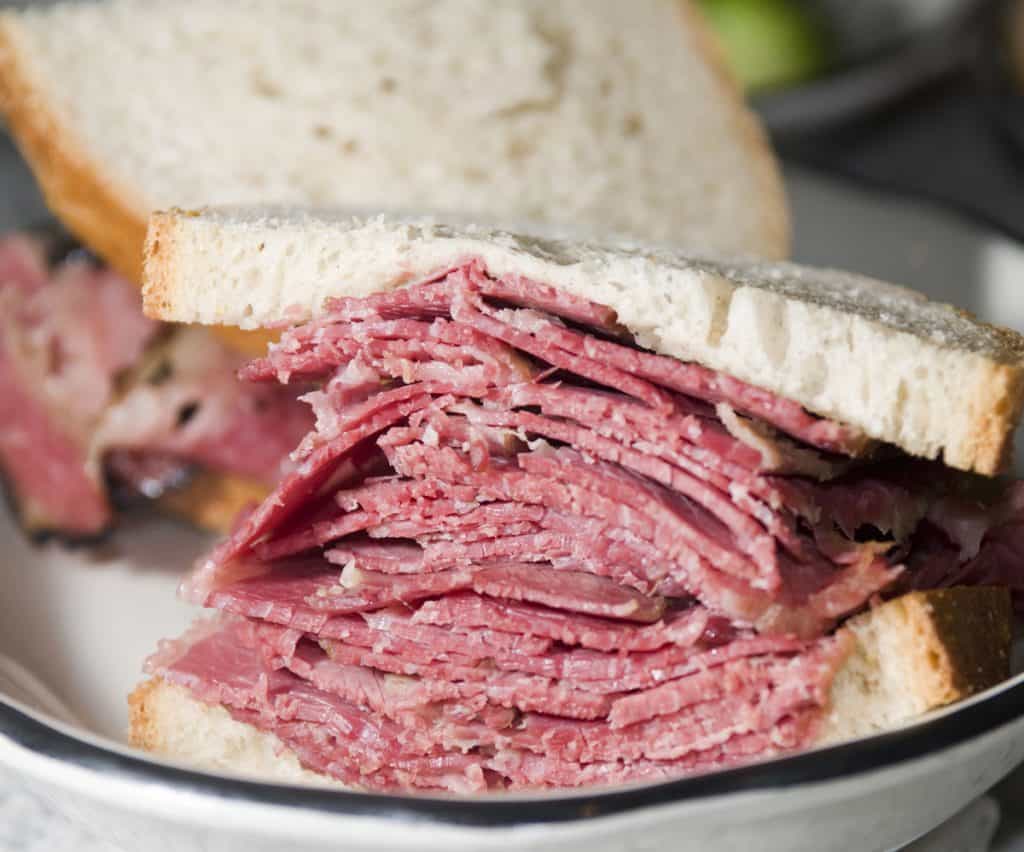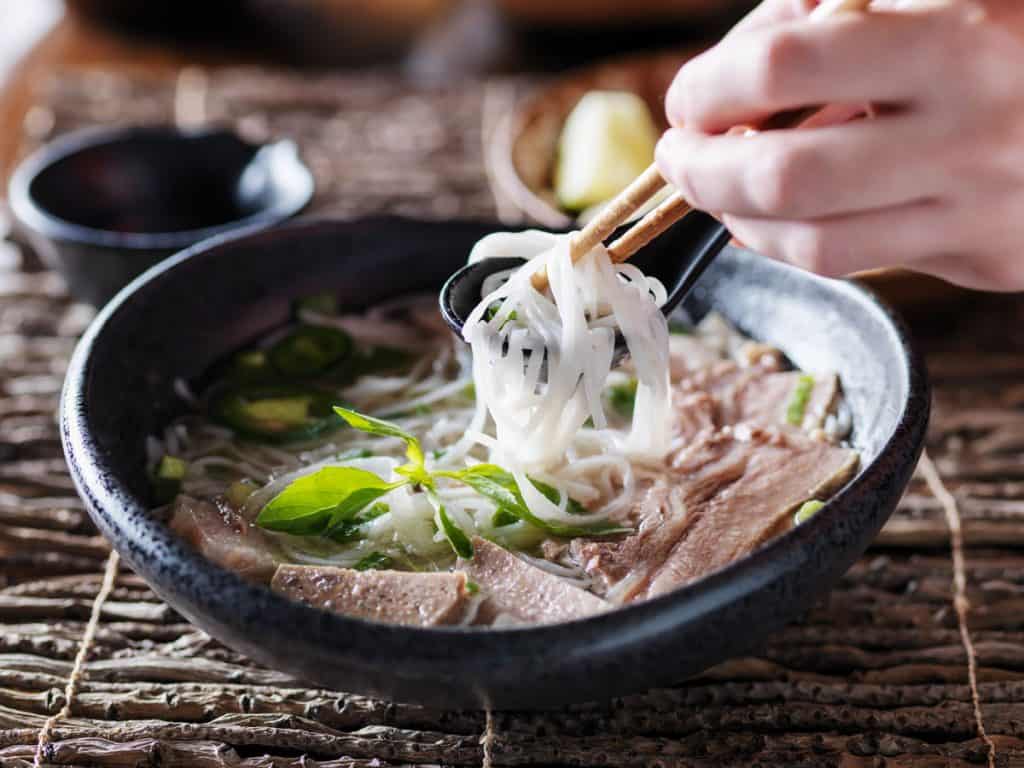Other Names for Beef Brisket Point Cut
Brisket is the name for the primal cut of beef that is the lower breast of a cow. If you have ever had a hard time finding it in the store, you might have wondered if it is ever called by a different name. In this article, we will tell you about alternative names for brisket.
Other Name for Brisket?
Brisket refers to a primal cut and has just one name. When divided up by its two main muscles, the point and the flat, each part has its own name. After the brisket is brined, cured, or roasted, it becomes corned beef, pastrami, pot roast, pho, and more.
The Definition and History of the Term Brisket
The word brisket means the breast or lower chest of a quadruped animal. The first known use of the term was in the 14th century. In Middle English, it was "brusket," which scholars believe comes from the Old Norse word for cartilage, "brjosk."
Other Names for Brisket Parts
A brisket consists of two different muscles with a layer of fat between them. Once divided, each muscle has its own name. The first cut is usually called the flat cut. It is near the rib cage. Other names for it are the thin cut or the center cut. It is leaner, more attractive, and usually more expensive.
The second cut is the point. This smaller muscle of the brisket is a fatty and marbled cut. Triangular in shape, it is nearer to the collarbone. This muscle is less used, and so the meat is slightly more tender.
While some people call the point the deckle, the deckle and the point are not the same things. The deckle is the fat and muscle that connect the flat to the rib cage. It is removed from any brisket that you buy in a supermarket.
The flat is good for rectangular cuts, corned beef, and pastrami while the point is good for shredding and pot roasts. The brisket you buy in grocery stores is usually just the flat cut.
A layer of fat separating the two sections is sometimes called the "fat cap." The two sections together give the brisket flavor and tenderness when cooked well.
An entire brisket is a packer brisket, a whole packer brisket, or a packer cut brisket. Including both the flat and the point, it weighs about 12 to 15 pounds. Some can weigh as much as 20 pounds.
Corned Beef
Brisket is the traditional cut used for making corned beef. To make it, you cure the brisket in a brine solution with seasonings and simmer it slowly. Corned beef gets its color from a pink curing salt called Prague powder made from sodium nitrite. Sodium nitrate prevents the meat from spoiling, although it is not necessary because the meat is already cooked.
The use of nitrates is controversial because some consider them harmful, and the World Health Organization has identified them as a possible carcinogen. If you prefer to avoid nitrates, it is possible to make corned beef without using them. You can use beetroot powder as a substitute to color the meat.
You can also make corned beef from the round primal cut, another tough cut of meat that is leaner than brisket. We think the fat content of brisket makes it better than the round for a moist and tender corned beef.
You can buy corned beef in a vacuum-sealed package from the grocery store, but if you want it to taste better, we recommend making it yourself.
To make your own corned beef, start with a flat cut of brisket. Combine your brine ingredients and bring them to a boil. Add ice water to cool the brine, and put the meat into a zip-lock bag with the brine.
Seal the package, and store it in the refrigerator for five to seven days. Flip it over every other day. Rinse it under cool water, and you're ready to cook it.
Pastrami

Pastrami is another deli meat typically made from brisket. Although you can use other cuts of beef to make pastrami, the navel end of the brisket, or the plate cut, is typically used. The meat is brined, rubbed with salt and spices, dry-cured, smoked, and cooked.
The difference between corned beef and pastrami is in the cut of beef and the way you process it. Pastrami comes from the fatty navel end and is smoked, cured, and boiled. In other words, Pastrami is smoked corn beef.
There are many different ways to make pastrami. The easiest is by beginning with corned beef. Start by inspecting the corned beef and removing loose pieces and excess fat. Then soak it for at least two hours per pound of meat to remove the salt.
Apply a thick layer of pastrami rub, a mix of spices that give pastrami its flavor. We like to make it from pepper and coriander seeds. Once you have coated it, smoke it at a low temperature, around 225 F. Use wood with a mild smoke flavor. Continue smoking it until it reaches an internal temperature of 165 F.
Pot Roast
You can make pot roast from brisket or any type of beef. A chuck roast, from the shoulder and neck of a cow, is often used for pot roast.
To make a brisket pot roast, trim the excess fat, sprinkle it with salt, pepper, and garlic powder, and roast it in a slow cooker with the fat cap up. Add some vegetables and cook for several hours at a low temperature. Serve it with potatoes and jus.
Beef Roast
Beef roast, like pot roast, can come from any of the cow's nine primal cuts. The front and rear cuts are best because they are tougher than the middle section.
Brisket works well as a beef roast because it has more muscle than other cuts. To make a brisket beef roast, salt the brisket, wrap it tightly, and refrigerate it overnight. Sear it on both sides, and roast it for three to four hours. Let it sit, and then put it in the refrigerator to collect the fat. Return to the stove and heat.
Brisket Burgers
Ground beef brisket can even become a tasty burger. To grind your brisket, arrange pieces of the meat on a jelly-roll pan, and put them in the freezer for 15 minutes. Toss them with oil, and pass them twice through a well-chilled meat grinder. Form your patties, and cook them on a preheated medium-high grill.
Beef Brisket Pho

Pho is a Vietnamese noodle soup made from beef stock, spices, rice noodles, and thinly sliced meat. It is Vietnam's national dish and dates bake to the 1880s. Brisket is the beef of choice for pho because of its flavor and durability. It can hold up to hours of simmering without falling apart.
The flat cut of brisket is preferable for pho because of its lower fat content. Pho is a great dish to make with leftover brisket.
Other Name for Brisket Around the World
If you want to get brisket in another country, you will need to know how to ask for it. Each culture cuts beef differently and has different names for it.
In Belgium and parts of Holland and France, brisket and flank are both called flank. In other parts of France, brisket is not cut separately and is part of the chuck. You might need to bring a chart to show the butcher which part of the cow you want.
In Canada and France, the usual term for brisket is "poitrine." A flat brisket is "pointe de poitrine de boeuf," and a full brisket is "poitrine complete." "Le tendron" is another French term for a full brisket. In Spanish, beef brisket has two names, "el pecho des res" and "la falda de res." In Israel, brisket is "bruit" or "chazeh."
In West Texas, dry-rubbed beef brisket and beef ribs smoked with mesquite are sometimes called "cowboy barbecue." In South Texas, barbacoa brisket is slow-cooked brisket often served in tacos.
The Bottom Line
Whatever you call it and however you slice it, brisket will always be brisket. Because it is one of the nine primal cuts, we don't believe there is any other name for it. Nonetheless, we do think it is a delicious and special cut of beef.
Source: https://bbqhost.com/other-name-for-brisket/
ارسال یک نظر for "Other Names for Beef Brisket Point Cut"